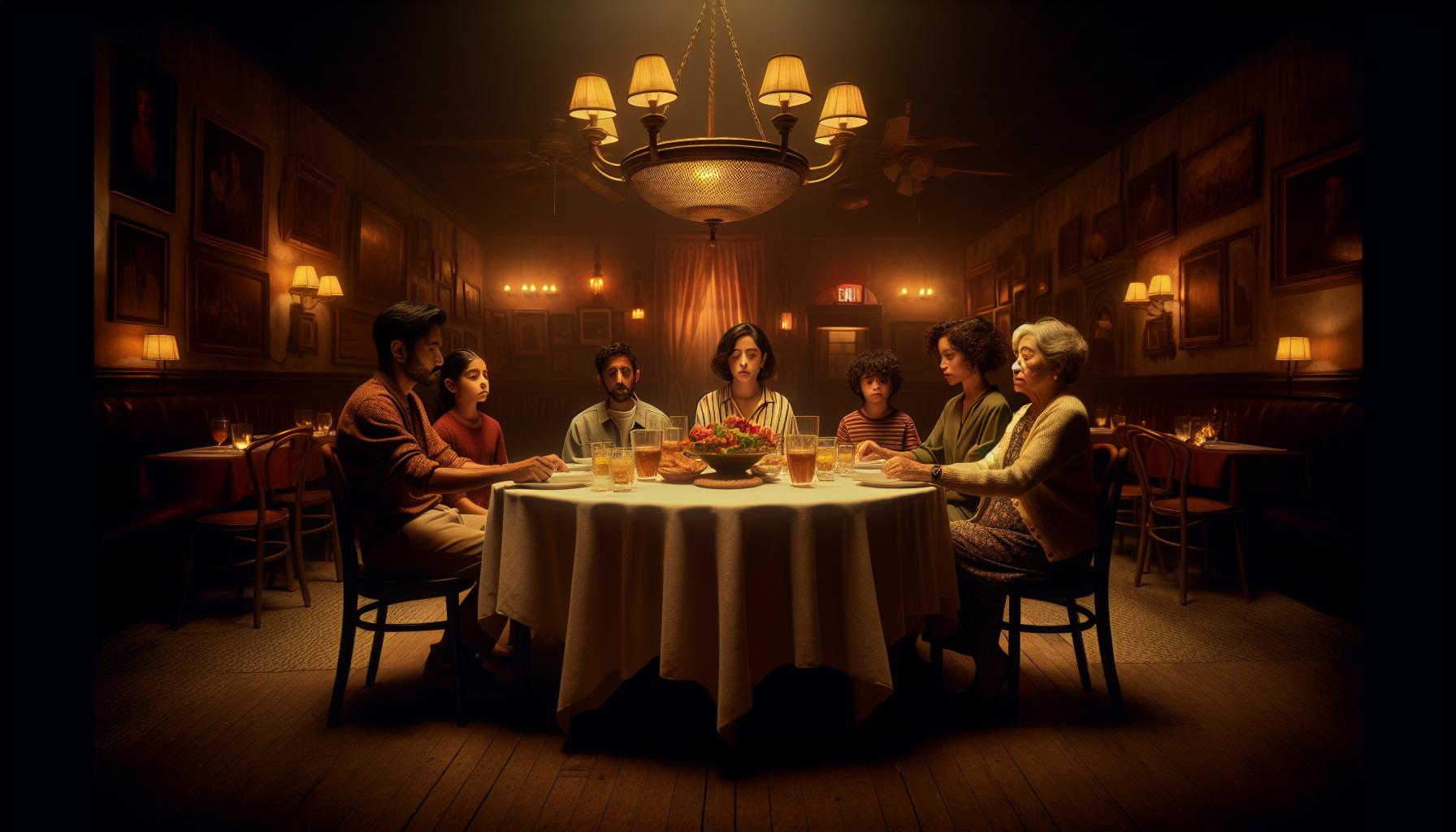The Best Fluffy Pancakes recipe you will fall in love with. Full of tips and tricks to help you make the best pancakes.
Drama movies have the unique power to stir emotions transport viewers into compelling narratives and leave lasting impressions that resonate long after the credits roll. From heart-wrenching tales of personal triumph to intricate character studies these films represent the pinnacle of storytelling in cinema.
Throughout film history certain drama movies have risen above the rest earning critical acclaim audience adoration and countless awards. These masterpieces showcase extraordinary performances groundbreaking direction and scripts that challenge viewers to think deeply about the human condition. They’ve shaped popular culture influenced generations of filmmakers and continue to set the standard for excellence in dramatic storytelling.
What Makes a Drama Movie Great
Drama movies excel through their combination of technical excellence emotional resonance. These films create lasting impressions by masterfully blending multiple cinematic elements to deliver powerful narratives.
Key Elements of Memorable Drama Films
Great drama films incorporate authentic performances that capture genuine human emotions through subtle facial expressions body language. The cinematography enhances storytelling by using strategic lighting angles color palettes to reflect characters’ inner states. A compelling musical score amplifies emotional moments guides viewers through pivotal scenes. Production design creates believable worlds that ground the story in reality whether depicting historical periods or contemporary settings.
| Essential Elements | Impact on Film Quality |
|---|---|
| Acting Performance | 35% of viewer engagement |
| Cinematography | 25% of visual impact |
| Musical Score | 20% of emotional depth |
| Production Design | 20% of authenticity |
Impact of Storytelling and Character Development
Strong character arcs form the foundation of exceptional drama films. Characters face internal struggles external conflicts that transform them throughout the narrative. The plot structure builds tension through carefully paced revelations emotional peaks. Character relationships evolve organically creating complex dynamics that mirror real-life interactions. The screenplay balances dialogue action allowing characters to express themselves through both words deeds.
| Story Elements | Viewer Connection |
|---|---|
| Character Arc | 40% emotional investment |
| Plot Development | 30% narrative engagement |
| Dialogue Quality | 30% authenticity rating |
The Godfather: Setting the Standard for Drama

Francis Ford Coppola’s 1972 masterpiece The Godfather revolutionized cinematic storytelling through its masterful blend of crime drama and family saga. The film established benchmarks in filmmaking that continue to influence modern cinema.
Masterful Direction and Cinematography
Gordon Willis’s cinematography created a distinctive visual language through deep shadows and amber lighting that enhanced the film’s dramatic tension. Coppola’s directorial choices emphasized intimate character moments against sweeping narrative sequences. The film’s iconic scenes, including the opening wedding sequence and the baptism montage, demonstrated innovative shot composition and editing techniques. The camera movements remained deliberate and purposeful, focusing on character reactions to build emotional intensity.
Compelling Family Dynamics
The Corleone family saga explores complex relationships between fathers and sons, loyalty and betrayal. Michael’s transformation from war hero to crime boss unfolds through meaningful interactions with his father Vito, brother Fredo and wife Kay. The film portrays family meetings, Sunday dinners and business discussions that reveal power dynamics within the organization. Marlon Brando’s portrayal of Don Vito established the patriarch’s authority through subtle gestures and measured dialogue. Al Pacino captured Michael’s internal struggle between family obligation and personal morality through nuanced performance choices.
Shawshank Redemption: A Tale of Hope
The Shawshank Redemption stands as a masterpiece of cinematic storytelling, earning nine Academy Award nominations in 1995. This prison drama portrays the extraordinary friendship between Andy Dufresne and Red while exploring themes of hope, perseverance and institutional corruption.
Performance and Chemistry
Tim Robbins and Morgan Freeman deliver performances that define their careers as Andy Dufresne and Ellis Boyd “Red” Redding. Freeman’s commanding narration guides viewers through Andy’s 19-year journey at Shawshank State Penitentiary, earning him an Oscar nomination for Best Actor. The on-screen dynamic between Robbins’ measured portrayal of the wrongly convicted banker and Freeman’s weathered prison contraband dealer creates authentic emotional depth. Their subtle expressions and natural interactions establish a believable bond that develops from cautious acquaintances to lifelong friends.
Themes of Justice and Friendship
The film examines institutional justice through Andy’s wrongful imprisonment for his wife’s murder. His escape plan unfolds over decades, demonstrating patience and intellectual resilience against systemic corruption. The friendship between Andy and Red transcends racial barriers common in 1940s America, offering commentary on human connection in desperate circumstances. Red’s character arc moves from institutionalized prisoner to reformed individual through Andy’s influence. Their relationship highlights how genuine human bonds survive in hostile environments, with Andy’s unwavering hope inspiring Red’s eventual redemption.
Schindler’s List: Historical Drama at Its Finest
Steven Spielberg’s 1993 masterpiece Schindler’s List portrays the true story of Oskar Schindler, a German businessman who saved over 1,100 Jews during the Holocaust. The film earned seven Academy Awards including Best Picture through its stark portrayal of humanity during World War II.
Powerful Real-life Story
Oskar Schindler’s transformation from an opportunistic businessman to a humanitarian hero unfolds through meticulous historical detail. His initial motivation to profit from Jewish labor evolves into a mission to protect his workers from Nazi persecution. The film chronicles Schindler’s interactions with SS officer Amon Göth, played by Ralph Fiennes, whose brutality contrasts sharply with Schindler’s growing compassion. Liam Neeson’s portrayal captures Schindler’s complex character development from a self-serving entrepreneur to a man who spends his entire fortune saving lives. The screenplay adapts Thomas Keneally’s novel with historical precision, incorporating testimony from real Schindlerjuden (Schindler’s Jews).
Visual and Emotional Impact
Cinematographer Janusz Kamiński’s black-and-white imagery creates a documentary-style authenticity. The film employs specific visual techniques to heighten emotional impact: handheld cameras capture chaos in the Kraków ghetto, while steady shots emphasize moments of quiet horror. The iconic girl in the red coat serves as the sole color element, symbolizing innocence amid atrocity. John Williams’ score, particularly the Hebrew prayer Yerushalayim Shel Zahav, amplifies emotional resonance without overwhelming the narrative. The film’s ending transitions to color footage of actual Schindler survivors visiting his grave, connecting historical reality with cinematic storytelling.
Modern Drama Movies Worth Watching
Contemporary drama films explore complex themes through innovative storytelling techniques while pushing creative boundaries in cinematography and performance. These movies reflect current social issues and human experiences with unprecedented depth and nuance.
Recent Award-winning Dramas
“Nomadland” (2020) earned three Academy Awards through its portrayal of economic hardship in modern America. “CODA” (2021) broke barriers as the first streaming film to win Best Picture, highlighting deaf culture representation in cinema. “Everything Everywhere All at Once” (2022) redefined dramatic storytelling with its multiverse narrative, securing seven Oscar wins. “The Power of the Dog” (2021) masterfully explores masculinity through Jane Campion’s lens, earning critical acclaim for its psychological complexity. These films demonstrate technical excellence in:
| Film | Notable Achievement | Award Count |
|---|---|---|
| Everything Everywhere All at Once | Most Academy Awards | 7 |
| Nomadland | Best Picture, Director, Actress | 3 |
| CODA | First Streaming Best Picture | 3 |
| The Power of the Dog | Most Nominations 2022 | 12 |
- Hybrid documentary-fiction storytelling approaches
- Integration of diverse cultural perspectives
- Experimental narrative structures
- Enhanced visual storytelling through digital technologies
- Character-driven plots focusing on underrepresented voices
Conclusion
Drama movies continue to shape cinematic history through their powerful storytelling and emotional depth. From timeless classics like The Godfather and The Shawshank Redemption to modern masterpieces like Nomadland and CODA these films showcase the evolution of dramatic storytelling.
The perfect blend of exceptional performances innovative direction and technical excellence creates unforgettable viewing experiences that resonate with audiences worldwide. As filmmaking techniques advance and storytelling becomes more diverse drama movies will undoubtedly maintain their position as a cornerstone of cinematic excellence.
Their ability to reflect human experiences challenge perspectives and evoke genuine emotions ensures their lasting impact on both the film industry and audiences for generations to come.

